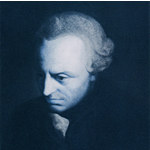Evaluate the argument that Kant’s moral theory could not support the idea of voluntary euthanasia.
Kant’s theory could be used to argue against voluntary euthanasia. Firstly, Kant would dismiss arguments concerning the suffering of the patient or the cost of treatment – these are not morally relevant factors for Kant. He is concerned with the act itself, not the consequences. Most justifications for voluntary euthanasia can therefore be dismissed.
Kant would consider the maxim “It is right to kill Dianne Pretty, suffering from Motor Neurone Disease, who has asked to die”. He would then universalise it, forming a Categorical Imperative: “It is always right to kill people suffering from Motor Neurone Disease”. Kant would ask “Is this a self contradiction?” It doesn’t appear to be. “Is it a contradiction of the will?” The answer seems to be “Yes!” We couldn’t want to make a rule that meant everyone with MND had to be killed. For Kant, the universal rule is important, and individual circumstances should not be taken into consideration.
However, Kantians can put more thought into their Categorical Imperatives, and might easily form a different universal rule. For example, we might be more comfortable making a rule that said “Anyone suffering from MND who has lost the will to live, and has asked to die, should be Killed.” Put another way, we might accept a law of nature that ended life when pain became unbearable.
Kant’s theory says that people should never be merely a means to an end. You should never kill someone in order to reduce suffering, or save money. However, Kant held ‘respect for persons’ in such high esteem that allowing someone to suffer and die without dignity may seem to go against his theory. The concept of human rights does not contradict Kant’s theory, which could be used to argue for the right to die with dignity.

